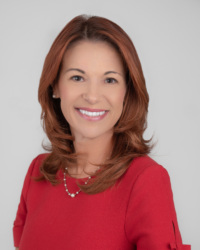In a state like North Dakota, with its vast prairies, deep valleys, and towering plateaus, the natural landscape can make one feel small or even isolated. Yet, despite its natural beauty and vastness, if you ask any North Dakotan what they love about living in the Peace Garden State, you are likely to receive a friendly, extended explanation that boils down to one thing: a sense of community.
It is this sense of community that drives State Superintendent Kirsten Baesler’s work across the state, where she has led the North Dakota Department of Public Instruction (NDDPI) for over a decade. Her commitment to ensuring that all voices have a seat at the table is currently guiding her work to expand access to innovative new staffing structures for teachers.
Even before the pandemic, schools across North Dakota were struggling to recruit and retain highly effective teachers. In fact, the state has been combating teacher shortages in every subject area for the past seven years. As these shortages began impacting student outcomes, Superintendent Baesler knew decisive action was needed. She started listening closely to her community about the changes North Dakota needed to make to bolster its teacher pipelines.
Superintendent Baesler jokes that she has “more cabinets than the average kitchen,” and explains how listening to her separate teacher, administrator, family, and student cabinets helped her better understand why North Dakotans weren’t interested in becoming teachers and why teachers were leaving the profession. Those conversations revealed three key barriers: teacher working conditions, professional respect and support for the profession, and flexible funding.
To address these barriers, Superintendent Baesler began exploring the Arizona State University’s Next Education Workforce model. The model positions teams of educators who provide instruction to and share responsibility for large, 50–150 student rosters, moving away from the historically siloed “one teacher: one classroom” approach with the goal of creating a more effective, sustainable teaching profession.
Recognizing that implementing such transformative change on a larger scale would require buy-in from stakeholders across the education sector, Superintendent Baesler and her team began bringing groups to Phoenix to see the model in action. On the first trip, NDDPI leaders were joined by state legislators, appropriators, policymakers, educator preparation program (EPP) leaders, and representatives from the state licensure and EPP approval boards. These leaders provided valuable insights into the model’s feasibility in North Dakota, helping the superintendent and her team better understand the challenges, like how teachers are trained, that would need to be addressed for implementation to be successful.
North Dakota further centered stakeholder input by including teachers in the process, recognizing that successful policy changes are best achieved alongside teachers, not imposed on them. The state’s teachers union was also included, which necessitated trips to observe how Mesa Public Schools in Arizona expanded classrooms and leveraged teams of educators to meet student needs to garner support for the work.
The superintendent and her team highlight these trips, as well as visits to observe other models like Ector County Independent School District’s implementation of the Opportunity Culture model, as central to building a willing coalition committed to reimagining teaching.
Additionally, NDDPI used feedback from these trips to guide decision-making. Addressing concerns about student outcomes, costs, and unforeseen factors, the state plans to start small by rolling out strategic staffing models in two districts by fall 2024. Using private philanthropic funds and state reserves, Fargo Public Schools and Northern Cass School District will serve as the two pilot sites. Fargo, the state’s third-largest district, is home to North Dakota’s largest population of new Americans (immigrants) and a major research institution. Northern Cass offers a completely different context, with slightly more than 700 K–12 students all attending one single school nestled between cornfields. Starting small allows NDDPI leadership to see evidence of success for the model in two distinct districts without relying on state funding. If successful, NDDPI can present this evidence to the legislature to secure additional funding for school transformation and design.
NDDPI is also aligning exploration of these models with other statewide initiatives, such as the teacher and principal apprenticeship programs. Fargo Public Schools plans to host 30 apprentices in its pilot program, training teachers to lead teams and preparing paraprofessionals to become teachers. In her conversations with educators, Superintendent Baesler often heard, “Teachers don’t quit teaching; they quit their leader.” She believes that ensuring future school leaders can effectively provide both instructional and organizational support to teachers serving in these roles will be vital to their success.
Though it will take time to determine whether these models have a positive impact on student academic growth, Superintendent Baesler’s approach creates an environment in which stakeholders at every level of the education system—teachers, teachers’ unions, educator preparation programs, and policymakers—are all deeply vested in the outcome.


